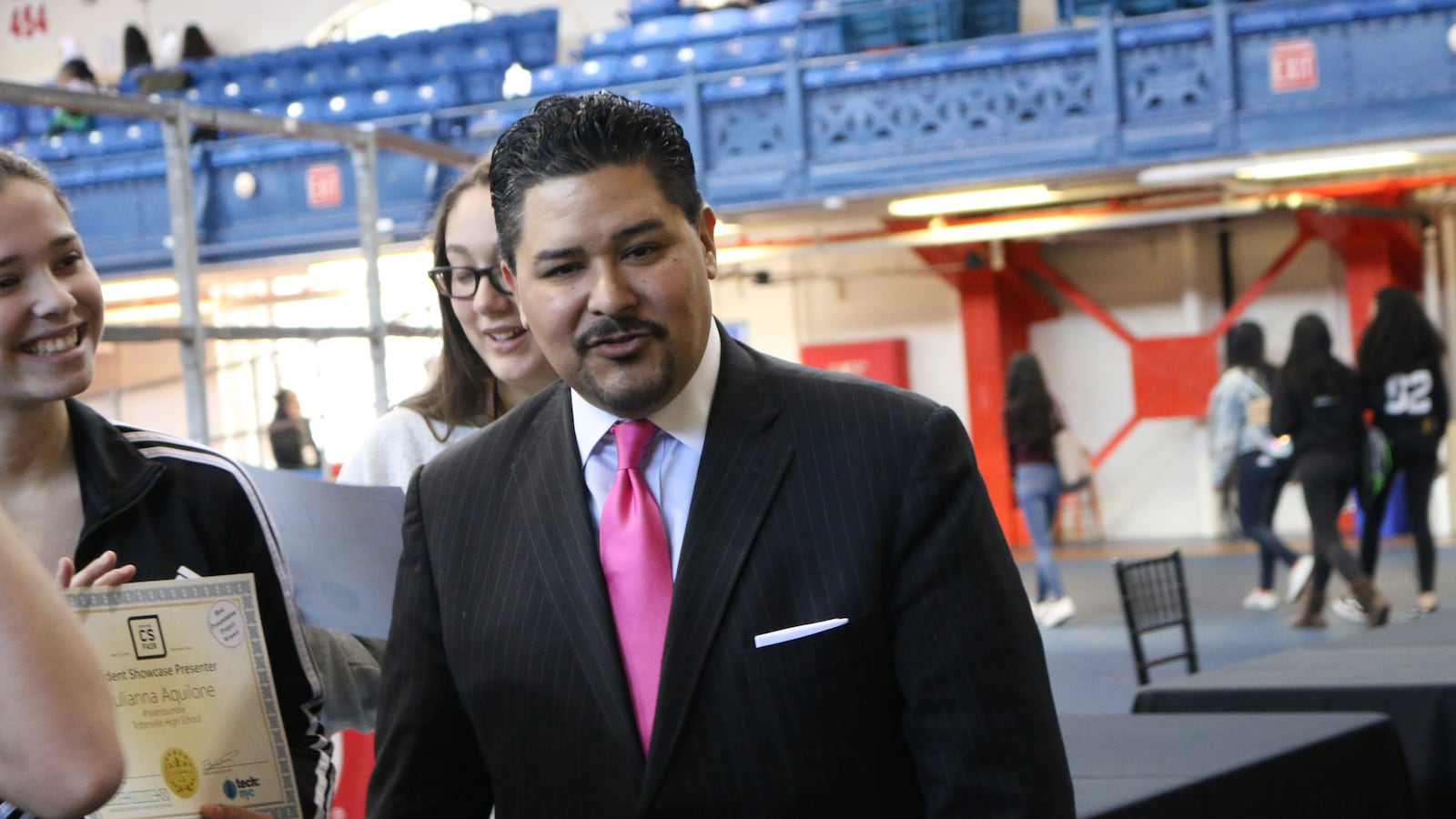Over his first two months as chancellor of New York City schools, Richard Carranza embarked on a listening tour that introduced him to 2,125 students, 1,876 parents, 2,984 teachers and employees, and 336 elected officials and community partners.
As he announced a major reorganization of the Department of Education Wednesday, Carranza also released a report detailing his takeaways from all he heard.
“I am excited to work with our Mayor on a bold, progressive agenda, that embraces diversity and is committed to making New York the fairest, most enlightened big City in America,” he concluded.
“The last four years gave us a strong foundation,” he said in reference to the work of his predecessor Carmen Fariña. But the reports suggests he will have some different priorities from the chancellor he replaced, including his push to increase integration in the city’s schools. “Now, we are laser focused on equity, because you cannot have excellence without it.”
Here are the highlights of the report, which introduces the system’s successes first and then addresses some of the challenges that Carranza hopes to address.
He wants to expand arts instruction. Carranza, who credits his experience in a mariachi band with keeping him focused and out of trouble as a teen, applauded the art and music education he witnessed on his school visits. And he wants to see more of it.
He believes in adding counselors and social workers. The chancellor said he will expand resources to support students facing trauma and other stressors “to achieve a socially just school system.” This is in line with the city’s budget deal earlier this month, which provided a modest increase to hire social workers in schools with high concentrations of students living in temporary housing.
The first challenge he notes: “Desegregating Our Schools.” That’s notable language given that the previous chancellor and mayor have shied away from the word segregation, though it’s not new for Carranza. “I am fully committed to investing in and expanding programs to desegregate our schools, and will work with communities to tackle this challenge head on in order to create a more fair, equitable, and just system,” he writes.
He wants to confront broader racial disparities. Carranza specifically cites gaps in student discipline rates and access to Gifted & Talented programs, and mentions the importance of culturally relevant curriculum. “Throughout our system, I will continue to ask tough questions, and work with our staff and community partners to ensure we address disparities, deconstruct inequitable systems, and build more equitable future for every child.”
He addresses charter schools directly, keeping focus on partnerships. “For me, the politicization of education is a red herring—we must make sure that each child in our City has an excellent education. When we focus on collaboration, we can better serve all students,” he writes.
He’s committed to the schools in the Renewal turnaround program. He says struggling schools should be called “schools of opportunity,” and investing in those schools can help change the national narrative about urban schools. But he doesn’t get into specifics.
He’s reworking the bureaucracy. He says principals have complained about receiving mixed messages from multiple offices in the education department. He announced a staff shake-up attempting to fix that this morning.
What’s not here: Concrete, academic challenges like getting more students to graduate. Carranza does say he is focused on improving math and reading instruction, and offer this academic vision: “We must ensure that every student knows how to write well, think like a scientist, understand history, and learn computer science. The diploma they leave our schools with should also say that they are critical thinkers (and know how to discern news), have a digital identity (because that will follow them for the rest of their lives), are articulate (so that they can express ideas), and that they can work in teams and collaborate.”

